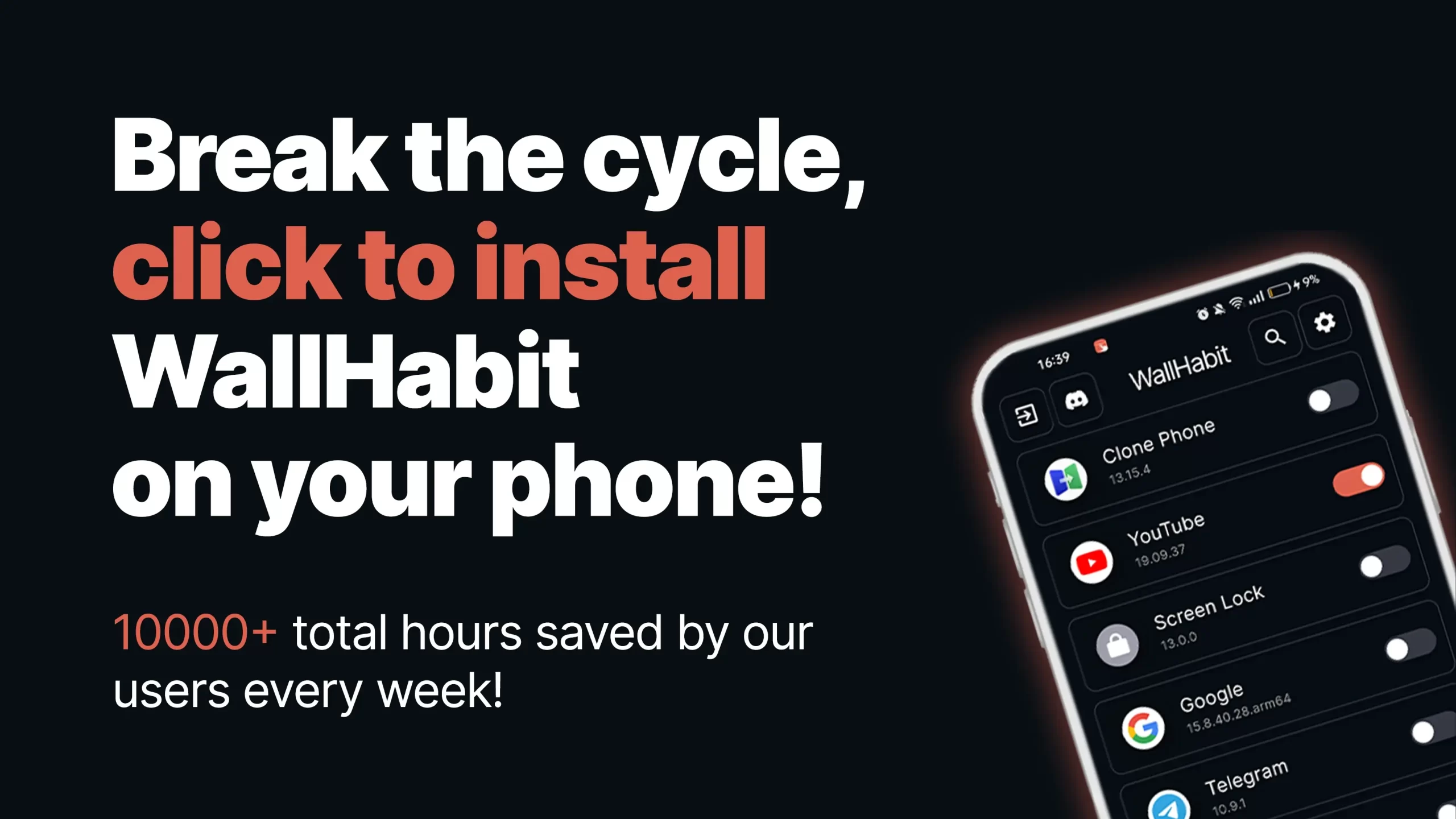In a world where our lives are increasingly governed by screens and digital devices, maintaining a sense of balance and control can feel like an uphill battle. From the moment we wake up and check our phones to the endless notifications that ping throughout the day, technology often dominates our attention and energy. This constant connection can lead to stress, distraction, and a sense of being perpetually overwhelmed.
Mindful tech usage is a concept that emerges from the need to reclaim our time and focus. It’s about stepping back and reassessing how technology fits into our lives, ensuring it serves our needs rather than dictating our daily routines. By being more intentional with our tech interactions, we can cultivate a healthier, more balanced relationship with our devices. In this blog post, we’ll explore practical strategies for integrating mindful use of technology into your habits, offering insights on how to manage screen time effectively and create a more thoughtful digital environment. Whether you’re looking to boost productivity, reduce stress, or simply gain more control over your tech use, this guide will provide you with the tools and techniques to achieve a more thoughtful approach to technology.
What is mindful tech usage?
Mindful tech usage is a conscious approach to how you engage with technology. It’s about being aware of your habits and making deliberate choices about your device use. This means not just using technology because it’s there, but understanding how it affects you and your daily life. Rather than letting tech run your day, mindful use of technology helps you take control, ensuring that it serves you rather than the other way around.
Why is it important to be mindful with technology?
In an era where our lives are deeply intertwined with technology, being mindful is crucial for maintaining balance and well-being. Without mindfulness, it’s easy to fall into patterns of excessive screen time, distraction, and stress. Mindful technology helps counteract these issues by encouraging thoughtful engagement with digital tools. By setting boundaries and focusing on purposeful use, you can avoid the negative effects of over-reliance on technology, such as diminished productivity and mental fatigue.
How can mindful tech usage improve mental health?
Mindful tech usage can significantly enhance mental health by reducing the negative impact of constant connectivity. It encourages a healthier balance between online and offline activities, which can alleviate stress and prevent burnout. When you adopt a mindful use of technology, you’re less likely to experience the anxiety and depression often linked to digital overload. Additionally, being mindful about tech use helps improve sleep patterns and fosters a sense of control and satisfaction, leading to better overall mental well-being.
Strategies for Mindful Tech Usage
Setting boundaries with technology
One of the most effective strategies for mindful tech usage is setting clear boundaries. This means defining specific times for tech use and sticking to them. For example, you might decide to check emails only in the morning and late afternoon, rather than continuously throughout the day. Another approach is to designate certain areas of your home as tech-free zones, such as the dining room or bedroom. These boundaries help you manage your tech use more effectively and create a healthier balance between online and offline activities.
Techniques for reducing screen time
Reducing screen time requires a proactive approach and the use of mindful technology practices. Start by tracking your screen time to identify patterns and areas where you can cut back. Set daily or weekly limits on how much time you spend on certain apps or activities. Use features like “Do Not Disturb” or “Focus Mode” on your devices to minimize interruptions during work or relaxation periods. Finding non-screen activities that you enjoy, such as reading or exercising, can also help reduce your overall screen time.
Incorporating mindfulness practices into tech use
Incorporating mindfulness practices into your tech use can enhance your overall experience and well-being. Start by setting aside time for mindfulness exercises, such as meditation or deep breathing, before or after using technology. Practice being fully present during tech interactions, such as focusing solely on one task at a time rather than multitasking. This approach helps you stay grounded and maintain a healthier relationship with technology by reducing the tendency to become overwhelmed or distracted.
Tools and Apps for Mindful Tech Usage
Using WallHabit
When it comes to mindful tech usage, WallHabit is a powerful ally. Its features are designed to help you implement mindful use of technology by reducing distractions and encouraging intentional device interaction. For instance, the “hold to unlock” function creates a deliberate pause before accessing certain apps, promoting more thoughtful use of your time.
Tools to help manage screen time
WallHabit’s app blocker feature further supports mindful tech usage by helping you focus on what matters most. By allowing you to block specific apps and features like shorts and reels, WallHabit ensures that your screen time is purposeful and productive. This type of mindful technology empowers you to create a digital environment that aligns with your goals and well-being.
Creating a Mindful Tech Environment
Organizing your digital workspace
Creating a mindful digital environment starts with an organized workspace. A clutter-free desktop or app layout is a fundamental part of mindful tech usage, as it reduces visual distractions and fosters focus. Arrange your tools in a way that supports productivity and prioritize apps that encourage mindful use of technology over those that lead to mindless scrolling.
Reducing digital clutter
Reducing digital clutter is another key aspect of creating a mindful tech environment. Regularly review and clean up unnecessary files, emails, and notifications. Unsubscribe from newsletters and promotional emails that you no longer find valuable. Delete apps that you don’t use and clear out old files that are taking up space. By reducing digital clutter, you create a more streamlined and manageable tech environment that supports better focus and less stress.
Setting up a distraction-free environment
Setting up a distraction-free environment is essential for maintaining focus and productivity. Designate specific areas for tech use, such as a home office or study area, and keep these spaces free from distractions. Use tools like “Do Not Disturb” modes during work or study times to minimize interruptions. Additionally, consider using physical barriers, such as noise-canceling headphones or privacy screens, to create a more focused and distraction-free tech environment.
Mindful Tech Usage in Daily Life
Mindful tech habits for work
In the workplace, mindful tech habits can greatly enhance productivity and job satisfaction. Start by setting specific times for checking emails and limit this to those periods only. Use apps like WallHabit to block distracting websites and notifications during work hours. Focus on one task at a time rather than multitasking, and take regular breaks to avoid burnout. By adopting these mindful tech habits, you can improve your work efficiency and maintain a healthier work-life balance.
Mindful tech habits for leisure
For leisure, practice mindful tech habits by being intentional about your tech use. Set limits on how much time you spend on social media or streaming services, and make sure to balance screen time with other activities. Engage in hobbies and interests that don’t involve technology, such as reading, cooking, or spending time outdoors. By focusing on meaningful and enriching activities, you can enjoy your leisure time without the negative effects of excessive screen use.
Balancing tech use with offline activities
Balancing tech use with offline activities is crucial for a well-rounded and fulfilling life. Schedule regular breaks from screens and incorporate offline activities into your daily routine. Engage in activities that promote physical and mental well-being, such as exercising, socializing in person, or pursuing creative hobbies.
By finding a balance between tech use and offline experiences, you can create a more harmonious and satisfying lifestyle.
Conclusion
To summarize, mindful tech usage involves being intentional and deliberate about how you interact with technology. By setting boundaries, reducing screen time, and incorporating mindful use of technology practices, you can create a healthier and more balanced relationship with your devices. Tools like WallHabit can support these efforts by helping you manage screen time and reduce distractions.
Adopting mindful technology habits can lead to a more balanced and fulfilling life. Start by implementing a few key strategies and gradually build on them to improve your tech usage. With consistent effort and the right tools, you can create a more intentional and productive digital experience. Embrace the principles of mindful tech usage to enhance your well-being and enjoy a more focused, rewarding relationship with technology.

